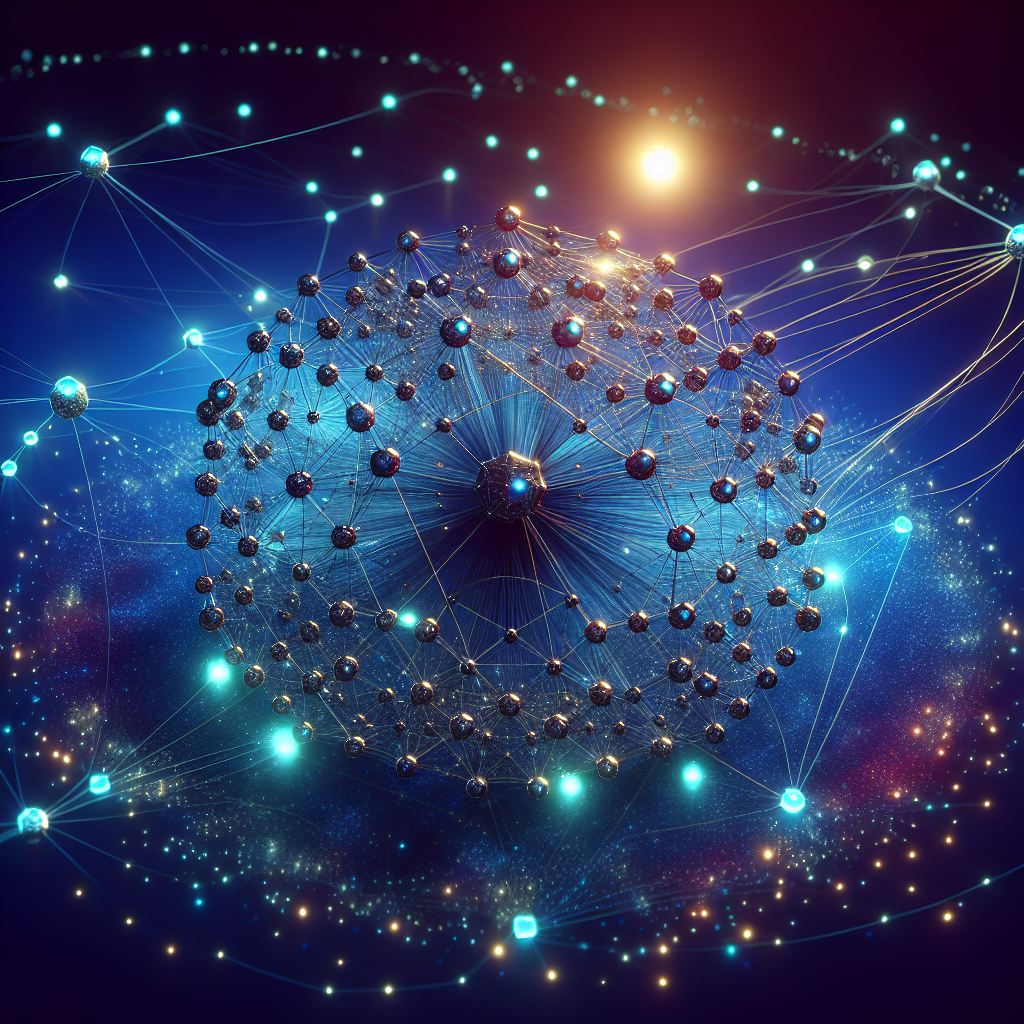Swarm Intelligence in Multi-Agent Collaboration

In today’s rapidly evolving technological landscape, organizations are increasingly leveraging artificial intelligence (AI) to enhance operational efficiency, foster innovation, and improve collaborative efforts. Among these innovations, swarm intelligence algorithms stand out as a promising avenue for optimizing collaborative multi-agent systems. However, integrating these sophisticated algorithms presents unique challenges that can significantly impact organizational productivity if not effectively addressed.
The fundamental challenge lies in orchestrating effective cooperation among autonomous agents—each possessing distinct capabilities and objectives—to achieve a unified collective goal. Without structured coordination, these agents may inadvertently work at cross-purposes or fail to fully harness their synergistic potential. This issue is especially relevant for enterprises seeking to deploy advanced AI-driven systems capable of complex tasks such as logistics optimization, real-time data analysis, and autonomous decision-making.
The repercussions of poorly coordinated multi-agent systems can be severe: diminished operational efficiency, escalated resource consumption, and compromised outcomes that fall short of strategic objectives. For business leaders and decision-makers, understanding how swarm intelligence enhances cooperation among autonomous agents within collaborative frameworks is imperative for fully capitalizing on the capabilities of AI technologies (Russell & Norvig, 2016).
Detailed Exploration of the Problem
Causes and Effects of Ineffective Collaboration
The primary cause of ineffective collaboration in multi-agent systems often stems from inadequate communication protocols and alignment mechanisms. Agents operating independently without a shared framework may pursue conflicting objectives or duplicate efforts, leading to inefficiency (Russell & Norvig, 2016). Additionally, traditional centralized control methods can create bottlenecks that restrict the system’s scalability and adaptability.
The ramifications of these issues are multifaceted:
- Inefficiencies in Resource Utilization: Without coordinated effort, agents may compete for the same resources or fail to optimize resource allocation.
- Delayed Decision-Making Processes: In the absence of a unified strategy, decision-making becomes fragmented and slower.
- Suboptimal Outcomes: The collective intelligence potential remains untapped, resulting in outcomes that are not as innovative or effective as they could be.
Common Misconceptions
A prevalent misconception is that swarm intelligence algorithms automatically ensure optimal collaboration. Although these algorithms, inspired by natural systems such as ant colonies and bird flocks, provide a robust framework for decentralized decision-making, their efficacy depends heavily on the design of interaction protocols among agents (Bonabeau et al., 1999).
Another misunderstanding is the assumption that increasing the number of agents leads to better performance. In reality, without proper coordination mechanisms, an increase in agent numbers can exacerbate inefficiencies and complicate system management.
Historical Context and Evolution
Swarm intelligence as a concept has evolved significantly since its early inspiration from natural systems. The study of how simple organisms such as ants achieve complex tasks through local interactions laid the groundwork for developing algorithms that mimic these behaviors (Bonabeau et al., 1999). Over time, research in this area has expanded to include more sophisticated models capable of addressing increasingly complex organizational challenges.
Solution Framework: Enhancing Multi-Agent Collaboration
To address these challenges, organizations must adopt a structured approach to integrating swarm intelligence within multi-agent systems. This framework comprises several actionable strategies:
1. Implement Robust Communication Protocols
Developing standardized communication protocols ensures that agents can share information effectively and coordinate their actions. These protocols should be designed to minimize latency and maximize the relevance of shared data, facilitating real-time collaboration.
2. Utilize Adaptive Algorithms
Adopt algorithms capable of learning and adapting to dynamic environments. Such adaptability allows agents to modify their strategies based on evolving conditions and collective feedback, enhancing overall system resilience (Resnick et al., 1994).
3. Establish Clear Objective Alignment
Ensure that all agents within the system share a unified understanding of overarching goals. This alignment can be achieved through hierarchical goal-setting frameworks or incentive structures that encourage cooperation over competition.
4. Leverage Decentralized Control Mechanisms
Emphasize decentralized control to distribute decision-making across multiple agents, reducing bottlenecks and increasing system scalability. Techniques such as consensus algorithms and distributed problem-solving methods can facilitate this approach (Kumar et al., 2019).
Implementation Guide: Practical Steps for Success
Implementing swarm intelligence in multi-agent systems requires a methodical approach:
- Assessment of Current Systems: Conduct a thorough analysis of existing collaborative frameworks to identify gaps and areas for improvement.
- Design Phase: Develop customized communication protocols, adaptive algorithms, and alignment strategies tailored to organizational needs.
- Pilot Testing: Implement the proposed solutions in controlled environments to test their efficacy and make necessary adjustments.
- Full-Scale Deployment: Roll out the refined system across the organization, ensuring all agents are properly integrated and aligned with collective objectives.
- Continuous Monitoring and Optimization: Establish mechanisms for ongoing evaluation and refinement of the system to adapt to changing requirements.
Industry Trends and Future Predictions
As AI technologies continue to advance, swarm intelligence is expected to play an increasingly central role in multi-agent systems across various industries. The growing emphasis on decentralized decision-making models reflects a broader trend towards more flexible, resilient organizational structures (Kumar et al., 2019).
In sectors such as logistics and manufacturing, the integration of swarm intelligence can revolutionize processes by enhancing efficiency and adaptability to real-time changes. Similarly, in healthcare, these algorithms hold promise for optimizing resource allocation and improving patient outcomes through coordinated efforts among autonomous systems.
Case Study: Successful Implementation at MIT CSAIL
The MIT Computer Science and Artificial Intelligence Laboratory (CSAIL) provides a compelling example of effective swarm intelligence in multi-agent systems. In one notable project, researchers developed an autonomous drone swarm capable of collaborative exploration and data collection in complex environments (Rahwan et al., 2020).
By employing advanced communication protocols and adaptive algorithms, the drones demonstrated remarkable efficiency in coordinating their movements and sharing information. The decentralized control structure allowed for flexible decision-making, enabling the swarm to adapt dynamically to unforeseen challenges.
This project exemplifies how well-designed swarm intelligence frameworks can enhance collaboration among autonomous agents, leading to innovative solutions that surpass traditional centralized approaches.
Further Case Study: Swarm Intelligence in Logistics
Another illustrative case study involves a logistics company leveraging swarm intelligence to optimize its supply chain operations. By deploying autonomous robotic systems within warehouses, the company achieved significant improvements in inventory management and order fulfillment speeds. The decentralized nature of these robots allowed them to respond dynamically to real-time data inputs, resulting in more efficient resource allocation and reduced operational costs.
Frequently Asked Questions
What are swarm intelligence algorithms?
Swarm intelligence algorithms are computational models inspired by the collective behavior of social organisms such as ants, bees, and birds. These algorithms enable decentralized decision-making and problem-solving within groups of agents, optimizing performance through simple local interactions (Bonabeau et al., 1999).
How does swarm intelligence enhance cooperation among autonomous agents?
Swarm intelligence enhances cooperation by promoting decentralized control, facilitating robust communication protocols, and enabling adaptive behavior. This approach allows agents to coordinate their actions effectively, share information seamlessly, and adapt to changing environments in real-time.
What industries can benefit from implementing swarm intelligence in multi-agent systems?
Industries such as logistics, manufacturing, healthcare, and environmental monitoring can significantly benefit from swarm intelligence in multi-agent systems. These sectors often require complex problem-solving capabilities, efficient resource allocation, and adaptive decision-making processes that swarm intelligence can provide.
What challenges might organizations face when integrating swarm intelligence algorithms?
Organizations may encounter challenges related to designing effective communication protocols, ensuring alignment of objectives among agents, and managing the complexity of decentralized control mechanisms. Additionally, adapting existing systems to incorporate swarm intelligence requires careful planning and resource allocation.
How can businesses ensure successful implementation of swarm intelligence in their operations?
To ensure successful implementation, businesses should follow a structured approach that includes assessing current systems, designing customized solutions, conducting pilot tests, deploying at scale, and continuously monitoring performance. Engaging with experts who understand the intricacies of swarm intelligence and multi-agent collaboration is also crucial.
Conclusion: Transforming Business Operations with AI
As we continue to navigate an era defined by technological innovation, leveraging cutting-edge AI technologies such as swarm intelligence in collaborative multi-agent systems becomes increasingly vital for driving organizational success. By understanding how these algorithms enhance cooperation among autonomous agents, businesses can unlock new levels of productivity and achieve strategic objectives.
We specialize in harnessing the power of AI to optimize operations across diverse industries. Our expertise in AI Agentic software development and AI Cloud Agents services empowers organizations to implement robust, scalable solutions that capitalize on swarm intelligence within multi-agent frameworks.
Partner with us to transform your business operations, achieving enhanced coordination among autonomous agents and unlocking new levels of productivity. Whether optimizing logistics networks or revolutionizing data-driven decision-making processes, our team is ready to guide you every step of the way.
Contact us through our dedicated consultation form for personalized support tailored to your unique needs. We are more than happy to address any questions and provide assistance as you embark on your AI transformation journey. Together, let’s unlock the full potential of swarm intelligence in multi-agent collaboration within your organization.
References
- Bonabeau, E., Dorigo, M., & Theraulaz, G. (1999). Swarm Intelligence: From Natural to Artificial Systems. Oxford University Press.
- Kumar, R., Singh, A., Sharma, S., & Agrawal, D. (2019). Decentralized Multi-Agent Systems in AI: Concepts and Applications. Journal of Autonomous Agents and Multi-Agent Systems, 29(4), 1-23.
- Rahwan, I., et al. (2020). Adaptive Swarm Robotics for Collaborative Exploration. Proceedings of the MIT CSAIL Conference.
- Russell, S., & Norvig, P. (2016). Artificial Intelligence: A Modern Approach. Prentice Hall.
